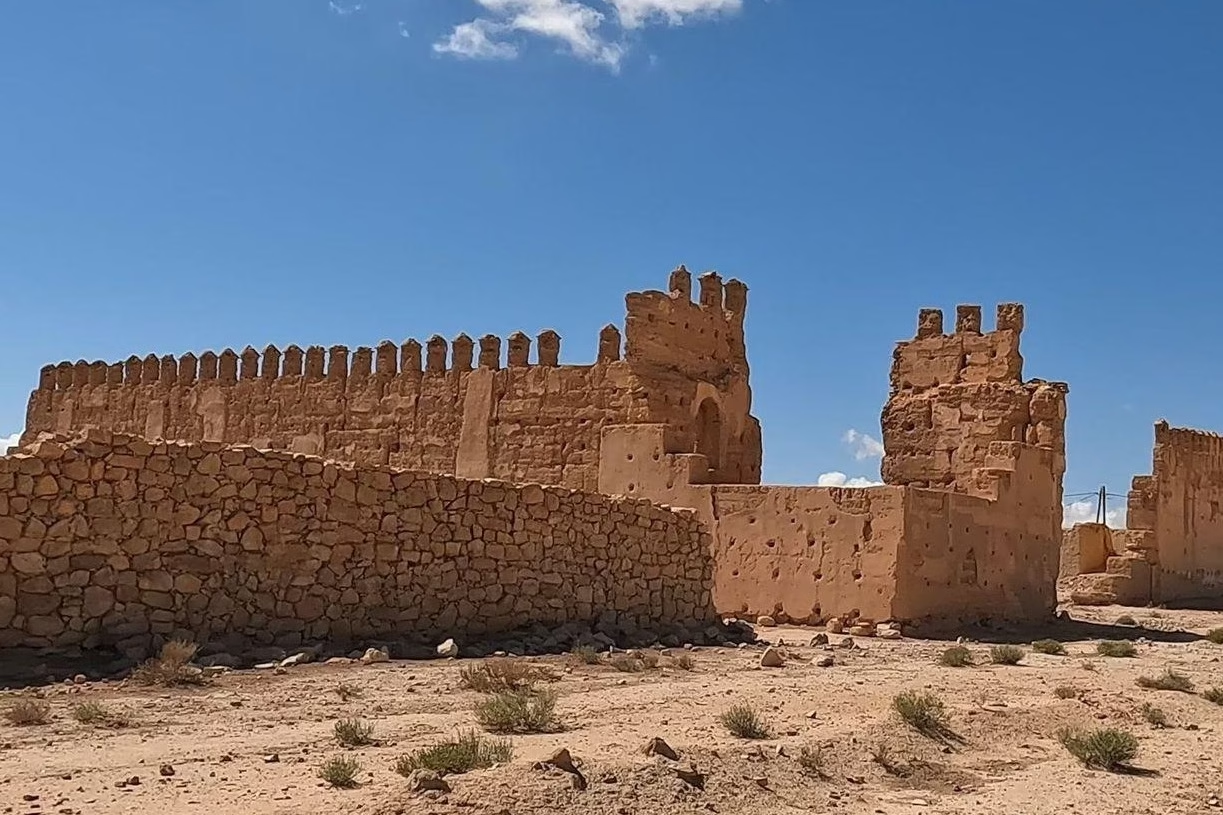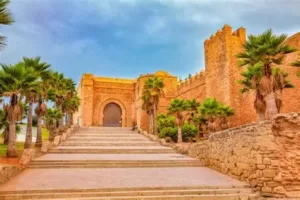Once a pillar of state control, this old fortress now battles for relevance and rescue.
Fez – Between the cities of Taza and Guercif in eastern Morocco lies Kasbah M’soun, a historic fortress that once played a major role in securing the kingdom’s eastern borders.
Today, however, this centuries-old site is quietly falling apart. Time, nature, and neglect have taken their toll, turning what was once a strategic military and economic center into a ghostly reminder of a forgotten chapter in Moroccan history.
Kasbah M’soun was built in 1684 during the reign of Sultan Moulay Ismail (1672–1727), one of Morocco’s most powerful rulers.
Known for his large-scale military constructions, Moulay Ismail ordered the building of many kasbahs across the country to maintain control over key regions.
These fortresses helped him secure the kingdom’s frontiers, collect taxes, and establish peace in areas that had long experienced tribal conflict and instability.
Historical records about Kasbah M’soun are rare, but one of the few references appears in the famous book “Kitab al-Istiqsa” by Moroccan historian Ahmad ibn Khalid al-Nasiri.
He notes that the fortress was commissioned by Moulay Ismail during a visit to the Wadi M’soun area.
The Sultan stationed 100 cavalry soldiers at the site with their families and appointed al-Mansour bin al-Wafi as the local governor, overseeing the kasbah and nearby fortresses in Taza and Wadi Sa’a.
The choice of location was no coincidence: M’soun sits at a key crossroads linking eastern and western Morocco and lies on the bank of the river, making it an ideal site for controlling trade routes and monitoring movement across the region.
Architecturally, the kasbah was built for function and strength. It had a rectangular layout, ten-meter-high earthen walls, and four large towers at the corners.
The fortress had only one entrance, guarded day and night by a sentry who controlled access. The structure also included rooms and storehouses, all protected by thick walls designed to withstand attack.
Kasbah M’soun continued to serve a strategic purpose long after its founding. During the period of the French protectorate in Morocco, the colonial army repurposed the site as a semi-permanent military base as they advanced toward Taza.
It also remained important during the Rif War led by resistance fighter Mohamed Ben Abdelkrim El Khattabi against Spanish colonial rule.
But after the war ended in 1926, the kasbah gradually lost its military role and became a small local market for surrounding tribes, a role that faded entirely by the 1960s.
Today, only a small part of the kasbah remains standing. Much of its structure has been severely damaged by erosion, weather, and human neglect.
Cracks run through the walls, towers have partially collapsed, and signs of decay are visible throughout.
Only a few families, around 30 people, still live inside the fortress, trying to survive in extremely difficult conditions. Most of the original residents have left in search of a better life.
Efforts to restore the site have been minimal. According to journalist Ahmed Sbbar, who is originally from the region, several local authorities have expressed interest in rehabilitating the kasbah through partnerships with the Ministry of Culture.
But so far, these promises have led to no real action. Abdelilah Bescamar, president of the Ibn Berri Center for Research and Heritage Protection in Taza, confirmed that the fortress played an important role during the French occupation and warned that without intervention, the site could be lost forever.
Kasbah M’soun is more than a ruin. It is part of Morocco’s living history, a place that reflects the vision of a powerful sultan, the movements of armies, and the everyday lives of the people who once called it home.
Preserving it is not just about saving stones and walls. It is about protecting the memory of a region, and giving future generations the chance to understand and connect with their past.
Without urgent intervention, this cultural treasure risks becoming nothing more than a footnote in history.
Read aslo: Princess Diana’s Dresses Heading to Auction in One of the Largest Sales
















